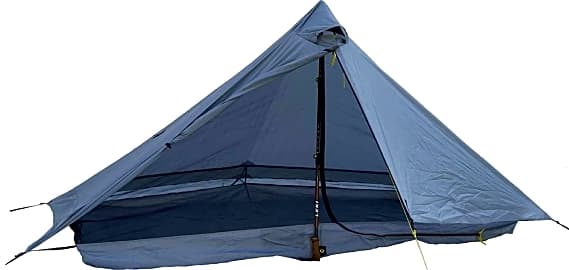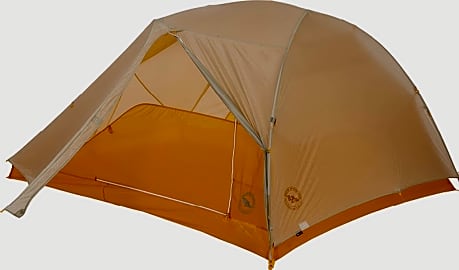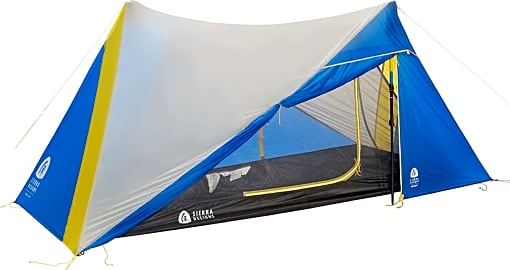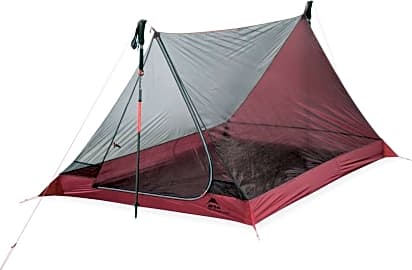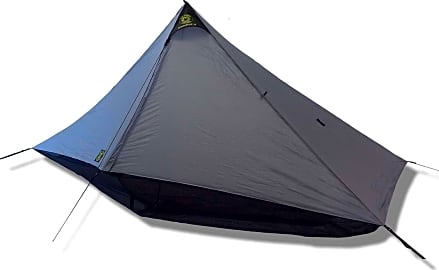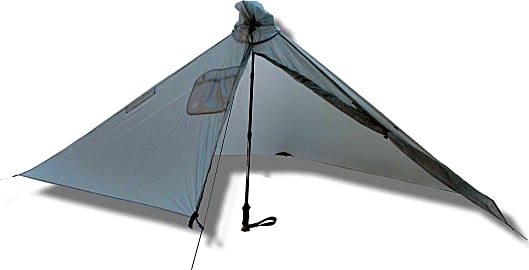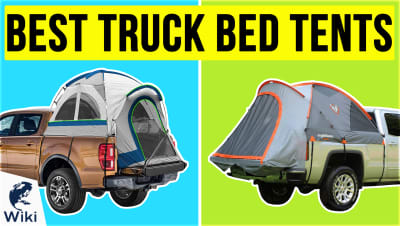The 10 Best Ultralight Backpacking Tents

This wiki has been updated 23 times since it was first published in May of 2019. Ultralight backpacking focuses on eliminating unnecessary equipment and utilizing the most lightweight gear you can find. A good tent should tip the scales at under 3 pounds, though there are effective shelters available at as little as 16 ounces. Here are some of the most innovative, reliable, and popular models, many of which are no strangers to the Appalachian Trail. When users buy our independently chosen editorial choices, we may earn commissions to help fund the Wiki.
Editor's Notes
February 03, 2021:
The Big Agnes Fly Creek HV remains immensely popular for very good reason, but if you're willing to spend more, the Nemo Hornet Elite and the ultra-premium Big Agnes Fly Creek Carbon offer lighter weight and just about the same high-end performance. The Big Agnes Tiger Wall UL3 is a top choice for couples who want to share the load. Alternatively, the Nemo Kumai does a great job of keeping wind and cold out and maximizing two people's body heat in actual winter conditions, something many lightweight tents can't claim.
Six Moon Designs has also continued to develop and produce impressively lightweight models, and their latest Six Moon Designs Lunar Solo is about as straightforward as they come. It's actually one of the lightest one-person options on the market. The Six Moon Designs Deschutes Plus is basically the Lunar Solo without a floor, and the Six Moon Designs Gatewood Cape, despite being mind-blowingly simple, also makes a passable rain poncho, even further reducing your pack weight.
May 05, 2019:
First of all, it's important to be realistic when looking at ultralight gear of any type. By its very nature, it's not as durable as the average equipment, and it probably won't last as long. But the fact is, if you're hiking for more than 3 days, a three-pound single-person tent is very hard to justify. There's no hard and fast rule, but most ultralight fanatics tend to focus on shelters around 2.5 pounds or lighter. Also, there are many different varieties of tent; some -- but not many -- are similar to standard dome tents, others resemble oversize bivy sacks, some are basically glorified bug nets, and others are mostly just tarps with a stick in the middle.
If you're looking for a tent that most closely resembles a tent, you're likely looking at around a 2-pound package. Right off the bat, know that Big Agnes makes some of the most well-respected such shelters in the industry. I've personally dragged a Fly Creek UL1 through nearly every type of terrain and climate outside of heavy snow, and it's served me as well as I could possibly ask for. It's plenty roomy enough for me, though I'm admittedly pretty short, but if you're over 6 feet tall, you'll have a harder time fitting in most ultralight tents. It is possible, though. The Fly Creek Carbon is made with Dyneema-infused fabric that's superior in many ways to silnylon, but it's amazingly expensive. Big Agnes' Tiger Wall, on the other hand, is actually well-priced if you consider that its "3-person" model makes an exquisitely spacious dwelling for a pair of thru-hikers.
Nemo's Hornet Elite is similar in design to the Fly Creek, but according to users it's even smaller, and some find it a bit claustrophobic even for an ultralight tent. But it is really light, and its side entrance is a hugely comfortable benefit. Their Blaze is unfortunately discontinued, but you can still get your hands on it, and it offers probably the highest internal volume overall out of any one-person tent on the list. The Sierra Designs may come close, though, and it's almost as affordable as you'll find in such a lightweight package.
Finally, it's time to talk about Six Moon Designs, a boutique company from the Pacific Northwest that's dedicated to reasonably priced and highly effective shelters. All of their designs are held up by trekking poles or the separately available carbon fiber pole. Their ultra-minimalist design gives them the highest floor-space-to-cost ratio on the market. Their Lunar Solo is almost impossible to beat for this reason, and if you don't need an actual floor, the Deschutes Plus is even lighter. It even has a shroud that acts as a bit of a bug net, and can keep out the drafts that mere tarps might be susceptible to. Then there's the Gatewood Cape. This is a truly unique piece of gear. If you're over about 5'9", it won't work for you, but if you're under that height and are crazy about cutting every bit of unnecessary weight, check this thing out. There's almost nothing to it -- it weighs 10 ounces -- and it serves as rain gear that covers 3/4 of your body while you're hiking though a storm. Sure, it's made of silnylon that might sag when it gets saturated, but I spent a handful of nights on the North Shore of Maui in one of the literally rainiest places on Earth, and while I wasn't exactly "dry" afterwards, I was able to sleep, and my pack and clothing weren't soaked. If you're good at gritting your teeth and bearing some elements, and want the absolute lightest pack, it or one of the Six Moon Designs' other tents are definitely worth considering.
Special Honors
Henry Shires' TarpTents TarpTents are generally found on the cutting edge of ultralight innovation. Henry, the founder and co-owner, is himself an avid hiker and strives to make functional products that are both very effective and relatively affordable. The ProTrail and Double Rainbow are their most popular single- and double-occupancy shelters, but you'd be hard-pressed to go wrong with any of their tents. tarptent.com
Mountain Laurel Designs These shelters are relatively straightforward, being little more than glorified, pyramid-shaped tarps. Their simplicity makes them not only incredibly lightweight and compact, but also reasonably priced. They're especially popular among backpackers and group hikers. mountainlaureldesigns.com
Hyperlite Mountain Gear Known among hikers as HMG, this high-end producer focuses primarily on tents made from cuben fiber, which isn't quite as abrasion-resistant as silnylon, but is stiffer, provides better waterproofing, and is nearly impervious to tears. It's also considerably more expensive than traditional materials, but if you're looking for the very best, you can't leave HMG out of the discussion. hyperlitemountaingear.com
Zpacks Ultralight Gear For the last several years, Zpacks has taken ultralight gear almost to an art form. Their most recent and refined lines use a fabric made from Dyneema, a fiber that's 15 times as strong as steel, and many of their offerings weigh shockingly little, even in two-person designs. zpacks.com


